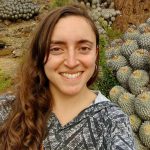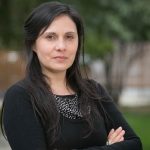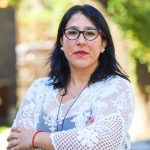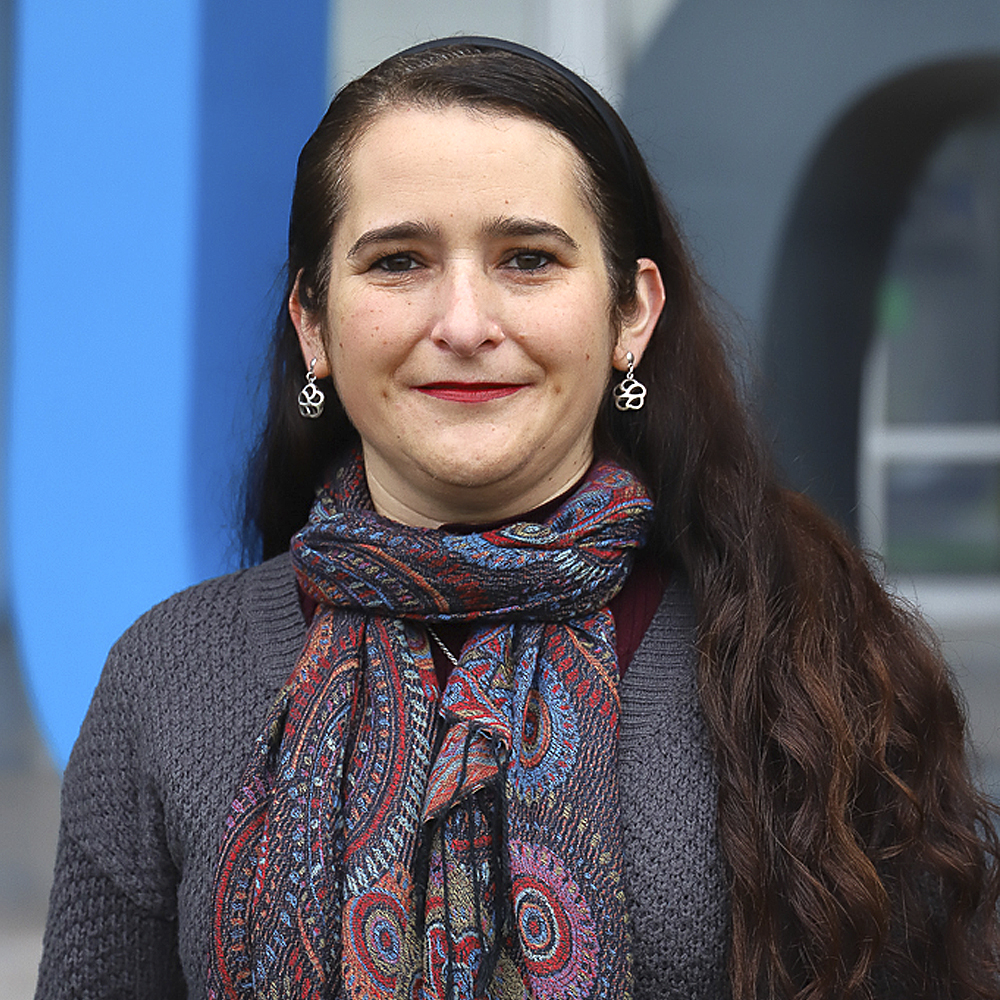Proyectos
- 1231401
- Abril 2023 - Marzo 2027
En EjecuciónAgencia Nacional de Investigación y Desarrollo - ANID
Capillary networks, gel debonding in prostheses, and fracture in rock mining from the viewpoint of the mathematical analysis of free-discontinuity problems
[vc_section el_class="container mx-auto align-items-center circle--pattern" css=".vc_custom_1648956589196{padding-top: 3rem !important;}"][vc_row el_class="pb-5"][vc_column][vc_wp_custommenu nav_menu="6"][uoh_breadcrumb_component automatic_breadcrumb="true"][uoh_title_component title_dropdown="big" title_decorator="true"]{{title}}[/uoh_title_component][vc_column_text css=""]One goal is to enhance the methods being currently developed by Espı́ndola (Physics), Krause (Physiology), and Xavier (Biomedical Engineering) for reconstructing capillary networks with ultrasound. The super-resolution is needed for early detection diseases such as cognitive decline, cancer, or liver fibrosis. They perfuse lipid-encapsulated microbubbles as contrast agents and then localize the bubbles in the ultrasound images with the singular value filter. However, that method leaves a non-negligible percentage of bubbles undetected. Here we propose to complement the singular value filter for the detection and tracking of microbubbles with the sophisticated and mathematically sound Mumford-Shah method for image contour detection, which stems from the conceptually-insightful and numerically-robust perspective of the minimization of energies. In the reconstruction of the capillary network from ultrasound, it is impossible to directly distinguish the microbubbles, or even the blood vessels, in each frame separately, due to the attentuation and degradation in this imaging technique. It is essential to take into account the dynamic nature of the problem, distinguishing the slowly-varying signals emitted by the tissue from those emitted by the microbubbles, which flow rapidly, behave nonlinearly, and have a much shorter coherence length. We therefore propose to regard the collection of two-dimensional frames as a single three-dimensional image, where a moving bubble becomes a tubular neighbourhood of a filament, which the Mumford-Shah model is expected to recover. From these filaments, bubbles can be detected and tracked, and the vertical inclinations of theses filaments will yield the microbubbles velocities. From the velocity profiles it is possible to estimate the shear wall stresses (their tangential elastic rigidities) of the blood vessels, and anomalies in these stresses are commonly good indicators of the presence of specific diseases.
A fortunate encounter between mathematics and mechanics led to the observation that the problem of
finding the path that the propagation of a crack will follow inside a structure upon loading could be solved with the mathematical theory (the analysis of free-discontinuity problems) developed for the apparently unrelated image segmentation Mumford-Shah model. The variational fracture theory initiated by Francfort and Marigo is by now (20 years after) very well established. The second goal of this proposal is to further develop the ongoing collaboration between Song (Pharmaceutics), Siegel (Pharmaceutics), Sánchez (Numerical analysis), Calderer (Applied mathematics), and the PI on the study of the debonding of polymer gels from rigid substrates (relevant in the design of the synthetic polymers coating the metallic parts of pacemakers and other medical prostheses) from this variational fracture theory perspective.
The third main goal is to apply the mathematical analysis of free-discontinuity problems to the modelling of the evolution of the cavity in the block caving technique in underground rock mining. This has been pursued by Ortega, Lecaros, and coworkers from the side of applied mathematics in academia, in collaboration with Gaete from the Geomechanics Research Department at El Teniente, research group to which Gutiérrez and the PI have joined in the last months. We propose to study the seismic activity induced by the fracture of the rock mass due to gravity, following the works in the last decade within the variational fracture theory that incorporate the inertia effects. The final aim is to optimize the injection of water jets for the aminoration of the seismic events near the operation sites.
The three research lines are applications of the phase-field regularization by Ambrosio and Tortorelli of the Mumford-Shah free-discontinuity model, a different variant being required in each of the three contexts. The first stage of the implementation is of mathematical modelling and high-level numerical simulation abilities, in which the intuition and first-hand knowledge from the members of the research team that are experts in vascular function, ultrasound imaging, polymer chemistry, and mining geomechanics is translated into particular mathematical concepts and concrete computational methods. This is followed by a stage of calibration and validation, where the full interplay with experiments is required. The product of a robust and validated computational method will constitute then an advancement in the capabilities, available resources, and understanding in each of the applied disciplines.[/vc_column_text][/vc_column][/vc_row][/vc_section][vc_section css=".vc_custom_1649209804184{background-color: #f6faff !important;}" el_class="p-md-0 pt-md-5"][vc_row el_class="container mx-auto align-items-center p-md-0 pt-5"][vc_column el_class="p-0"][/vc_column][/vc_row][/vc_section][vc_section css=".vc_custom_1649210787516{background-color: #f6faff !important;}" el_class="p-md-0 pt-md-5 pb-md-5"][vc_row el_class="container mx-auto align-items-center"][vc_column][/vc_column][/vc_row][/vc_section]
Investigador/a Responsable
- 1231401
- Abril 2023 - Marzo 2025
En EjecuciónAgencia Nacional de Investigación y Desarrollo - ANID
Plate and shell models for magnetoelastic and poroelastic heterogeneous materials and modeling for a gel bonded to a curved rigid substrate obtained by simultaneous homogenization and dimension reduction
[vc_section el_class="container mx-auto align-items-center circle--pattern" css=".vc_custom_1648956589196{padding-top: 3rem !important;}"][vc_row el_class="pb-5"][vc_column][vc_wp_custommenu nav_menu="6"][uoh_breadcrumb_component automatic_breadcrumb="true"][uoh_title_component title_dropdown="big" title_decorator="true"]{{title}}[/uoh_title_component][vc_column_text css=""]Our interest in this project is to obtain two-dimensional models for a three-dimensional thin structures involving situations:
Magnetoelastic plates which are heterogeneous and whose heterogeneity occur at a small scale which depends of the thickness of the plate. Depending on energy scaling and the ratio between these two small parameters, different theories can be obtained.
Poroelastic shell containing a viscous fluid.
Quasistatic evolution problems for linearly elastoplastic shell with hardening.[/vc_column_text][/vc_column][/vc_row][/vc_section][vc_section css=".vc_custom_1649209804184{background-color: #f6faff !important;}" el_class="p-md-0 pt-md-5"][vc_row el_class="container mx-auto align-items-center p-md-0 pt-5"][vc_column el_class="p-0"][/vc_column][/vc_row][/vc_section][vc_section css=".vc_custom_1649210787516{background-color: #f6faff !important;}" el_class="p-md-0 pt-md-5 pb-md-5"][vc_row el_class="container mx-auto align-items-center"][vc_column][/vc_column][/vc_row][/vc_section]
Patrocinante
- 1231401
- Abril 2023 - Marzo 2027
En EjecuciónAgencia Nacional de Investigación y Desarrollo - ANID
Capillary networks, gel debonding in prostheses, and fracture in rock mining from the viewpoint of the mathematical analysis of free-discontinuity problems
[vc_section el_class="container mx-auto align-items-center circle--pattern" css=".vc_custom_1648956589196{padding-top: 3rem !important;}"][vc_row el_class="pb-5"][vc_column][vc_wp_custommenu nav_menu="6"][uoh_breadcrumb_component automatic_breadcrumb="true"][uoh_title_component title_dropdown="big" title_decorator="true"]{{title}}[/uoh_title_component][vc_column_text css=""]One goal is to enhance the methods being currently developed by Espı́ndola (Physics), Krause (Physiology), and Xavier (Biomedical Engineering) for reconstructing capillary networks with ultrasound. The super-resolution is needed for early detection diseases such as cognitive decline, cancer, or liver fibrosis. They perfuse lipid-encapsulated microbubbles as contrast agents and then localize the bubbles in the ultrasound images with the singular value filter. However, that method leaves a non-negligible percentage of bubbles undetected. Here we propose to complement the singular value filter for the detection and tracking of microbubbles with the sophisticated and mathematically sound Mumford-Shah method for image contour detection, which stems from the conceptually-insightful and numerically-robust perspective of the minimization of energies. In the reconstruction of the capillary network from ultrasound, it is impossible to directly distinguish the microbubbles, or even the blood vessels, in each frame separately, due to the attentuation and degradation in this imaging technique. It is essential to take into account the dynamic nature of the problem, distinguishing the slowly-varying signals emitted by the tissue from those emitted by the microbubbles, which flow rapidly, behave nonlinearly, and have a much shorter coherence length. We therefore propose to regard the collection of two-dimensional frames as a single three-dimensional image, where a moving bubble becomes a tubular neighbourhood of a filament, which the Mumford-Shah model is expected to recover. From these filaments, bubbles can be detected and tracked, and the vertical inclinations of theses filaments will yield the microbubbles velocities. From the velocity profiles it is possible to estimate the shear wall stresses (their tangential elastic rigidities) of the blood vessels, and anomalies in these stresses are commonly good indicators of the presence of specific diseases.
A fortunate encounter between mathematics and mechanics led to the observation that the problem of
finding the path that the propagation of a crack will follow inside a structure upon loading could be solved with the mathematical theory (the analysis of free-discontinuity problems) developed for the apparently unrelated image segmentation Mumford-Shah model. The variational fracture theory initiated by Francfort and Marigo is by now (20 years after) very well established. The second goal of this proposal is to further develop the ongoing collaboration between Song (Pharmaceutics), Siegel (Pharmaceutics), Sánchez (Numerical analysis), Calderer (Applied mathematics), and the PI on the study of the debonding of polymer gels from rigid substrates (relevant in the design of the synthetic polymers coating the metallic parts of pacemakers and other medical prostheses) from this variational fracture theory perspective.
The third main goal is to apply the mathematical analysis of free-discontinuity problems to the modelling of the evolution of the cavity in the block caving technique in underground rock mining. This has been pursued by Ortega, Lecaros, and coworkers from the side of applied mathematics in academia, in collaboration with Gaete from the Geomechanics Research Department at El Teniente, research group to which Gutiérrez and the PI have joined in the last months. We propose to study the seismic activity induced by the fracture of the rock mass due to gravity, following the works in the last decade within the variational fracture theory that incorporate the inertia effects. The final aim is to optimize the injection of water jets for the aminoration of the seismic events near the operation sites.
The three research lines are applications of the phase-field regularization by Ambrosio and Tortorelli of the Mumford-Shah free-discontinuity model, a different variant being required in each of the three contexts. The first stage of the implementation is of mathematical modelling and high-level numerical simulation abilities, in which the intuition and first-hand knowledge from the members of the research team that are experts in vascular function, ultrasound imaging, polymer chemistry, and mining geomechanics is translated into particular mathematical concepts and concrete computational methods. This is followed by a stage of calibration and validation, where the full interplay with experiments is required. The product of a robust and validated computational method will constitute then an advancement in the capabilities, available resources, and understanding in each of the applied disciplines.[/vc_column_text][/vc_column][/vc_row][/vc_section][vc_section css=".vc_custom_1649209804184{background-color: #f6faff !important;}" el_class="p-md-0 pt-md-5"][vc_row el_class="container mx-auto align-items-center p-md-0 pt-5"][vc_column el_class="p-0"][/vc_column][/vc_row][/vc_section][vc_section css=".vc_custom_1649210787516{background-color: #f6faff !important;}" el_class="p-md-0 pt-md-5 pb-md-5"][vc_row el_class="container mx-auto align-items-center"][vc_column][/vc_column][/vc_row][/vc_section]
Co-Investigador/a
- 11230891
- Marzo 2023 - Marzo 2025
En EjecuciónAgencia Nacional de Investigación y Desarrollo - ANID
Fondecyt de Iniciación 11230891 Conservation paleobiology in central Chile: merging the fossil record and ecological modeling to inform the present and future of an endangered ecosystem.
[vc_section el_class="container mx-auto align-items-center circle--pattern" css=".vc_custom_1648956589196{padding-top: 3rem !important;}"][vc_row el_class="pb-5"][vc_column][vc_wp_custommenu nav_menu="6"][uoh_breadcrumb_component automatic_breadcrumb="true"][uoh_title_component title_dropdown="big" title_decorator="true"]{{title}}[/uoh_title_component][vc_column_text css=""]Conservation paleobiology deals with the use and application of paleontological data to the conservation of biodiversity. It implies the study of the circumstances driving species to the brink of extinction, to go extinct, or survive through the changes. In the present scenario of Global Change, this discipline seems useful as it can inform about the paths that species can undergo at present and in the near future. Particularly important to inform the state and faith of present-day ecosystems are those studies dealing with the last glacial-interglacial transition, since they show the changes faced by many still extant species under a scenario of global warming and an increasing human population. A close parallel to todays threats to biodiversity. The present proposal will use the rich vertebrate fossil record from the site of Tagua Tagua 3 (TT3) in the Antiguo Lago de Tagua Tagua (ALTT), Region de OHiggins, to investigate changes in biological communities through time. This record spans from the late Pleistocene (~13 kyr BP) to the mid Holocene (~6 kyr BP), presenting a continuous faunal sequence with extinct megafauna in its older component and extant vertebrates towards the Holocene. The record also attests the arrival and establishment of humans, as well as the occurrence of important changes in vegetation and climate. All this together makes of TT3 a unique record for central Chile, that offers the opportunity to make an adequate reconstruction of the recent past of a greatly endangered natural system. The ecosystem-through-time reconstruction and analysis includes the following objectives: (1) a comprehensive study of the fossil record to identify what, how many, and how abundant were the different species at different moments through time in the ALTT, with a particular emphasis on vertebrates; (2) to see how the communities reconstructed from the fossil record behave in moments of major environmental changes, including anthropogenic drivers of change, extinction of megafauna, and vegetation changes; (3) use food web modeling for analyzing the causes and consequences of the changes in these communities. This aims to pursue models that can integrate the fossil record and proxies of environmental change to understand the vulnerabilities to which these communities were exposed at different moments through time; (4) work in characterizing the present-day state of the vertebrate community in the area near the ALTT, aiming to build a modern picture in terms of community composition as well as in food web structure, to compare with what is revealed, and predicted, by the fossil record and associated models. The methodology to accomplishing these objectives includes: (1) fossil preparation, taxonomic identification, and quantification (MNI, NISP) for each level excavated in TT3; (2) to compare the faunal communities inferred from the fossil record to the available record of environmental changes through time (vegetation, climate, human arrival); (3) to stablish trophic relationships among the different species identified in the fossil record (using literature, stable isotope analyses results and zooarchaeological studies); this information will be used to implement food web models that explore the stability and complexity of different vertebrate communities through time and during times of particular important changes such as megafaunal extinctions, human arrival a changes in vegetation; (4) current species occurrences in the area will be inferred from the literature, open databases (GBIF) and complemented using species distributions models along with field species surveys; this information will be used to understand the current species composition of the area and to model current trophic interactions to compare with the ones inferred from the fossil record.
Some expected results are a thorough characterization of community composition and food web topology through time, particularly at moments of important environmental changes. The arrival of humans during the late Pleistocene and the trophic connections generated with the fauna present should have an effect in the topology and stability of the food web. At the same time, the inclusion of a dynamic bottom-up controlled change (forested vs. shrubland) will provide important insights on how the food web and the vertebrate communities changed in moments of major vegetation changes. It is expected that some moments in the past will parallel the present-day conditions of biological systems from central Chile, providing clues on how to face the current environmental changes that endanger these ecosystems.[/vc_column_text][/vc_column][/vc_row][/vc_section][vc_section css=".vc_custom_1649209804184{background-color: #f6faff !important;}" el_class="p-md-0 pt-md-5"][vc_row el_class="container mx-auto align-items-center p-md-0 pt-5"][vc_column el_class="p-0"][/vc_column][/vc_row][/vc_section][vc_section css=".vc_custom_1649210787516{background-color: #f6faff !important;}" el_class="p-md-0 pt-md-5 pb-md-5"][vc_row el_class="container mx-auto align-items-center"][vc_column][/vc_column][/vc_row][/vc_section]
Co-Investigador/a
- FOVI240258
- Marzo 2023 - Mayo 2022
AdjudicadoAgencia Nacional de Investigación y Desarrollo - ANID
Paisaje y geografía en la narrativa para las infancias en Chile: imaginarios de identidad nacional/regional (2011-2022)-FONDECYT INICIACIÓN
[vc_section el_class="container mx-auto align-items-center circle--pattern" css=".vc_custom_1648956589196{padding-top: 3rem !important;}"][vc_row el_class="pb-5"][vc_column][vc_wp_custommenu nav_menu="6"][uoh_breadcrumb_component automatic_breadcrumb="true"][uoh_title_component title_dropdown="big" title_decorator="true"]{{title}}[/uoh_title_component][vc_column_text css=""]Esta investigación propone analizar la configuración discursiva de idearios de identidad nacional y regional en un Esta investigación propone analizar la configuración discursiva de idearios de identidad nacional y regional en un corpus de narrativa producida específicamente para las infancias en Chile, el cual se constituye de cuentos, novelas y libros álbum. La cuestión de la identidad es un fenómeno discursivo que ha resultado ser objeto de estudio en el ámbito de la literatura para adultos/as producida en Chile, principalmente, en las últimas tres décadas (Yankas; Antillanca y Loncón; Rojo et al.; Salomone et al.; Subercaseaux; Romero; Álvarez; Traverso y Kottow, entre otros/as). De manera similar, se observa un interés en este fenómeno en el ámbito de los childrens literature studies desarrollados en los últimos veinte años en Norteamérica y Europa principalmente (Ying-yu Chen; McGillis; Meek; Bradford; Stephens; Doughthy; Panau y Tsilimeni; Jones; Keane; Truglio; Kelen y Sundmark). Por el contrario, en Chile, en lo que respecta a la llamada literatura infantil, el fenómeno de las discursividades sobre lo identitario es una línea de investigación incipiente (Ibaceta; Sepúlveda y Astudillo; Valenzuela et al.).
En consecuencia, la pertinencia de este proyecto radica en esta falta de conocimiento de un fenómeno que históricamente se ha configurado discursivamente de la mano de la producción cultural y literaria, en parte, gracias al establecimiento de las ideologías nacionalistas que fueron predominantes en el campo político y cultural a partir del siglo XIX y durante todo el siglo xx (Cid xviii). Esta predominancia se vincula, además, con procesos históricos que determinan en importante medida el contexto actual y, por tanto, las lógicas de los discursos literarios para las niñeces. A saber, procesos históricos de larga data como el colonialismo, el mestizaje, la constitución de un estado-nación, los movimientos migratorios, los procesos modernizadores y el consecuente extenso conflicto del Estado de Chile con los pueblos originarios, han infundido particularidades estéticas e ideológicas en la creación literaria para las infancias; particularidades que además se relacionan, en las dos primeras décadas del siglo XXI, con fenómenos como la globalización y la crisis medioambiental, todo ello cristalizado a partir de la configuración discursiva del topos (Ibaceta 2014).
Considerando esta tendencia a la articulación cronotópica del discurso identitario en la narrativa para las infancias de las últimas dos décadas, y con el interés de aportar al desarrollo del conocimiento de esta área a través de una investigación que ponga en relación los resultados con el contexto sociocultural y político del siglo XX y XXI, este proyecto tiene como objetivo general: Identificar, analizar y problematizar los modos de representación/construcción estético-narrativos y estético-gráficos (ilustraciones) de sentidos identitarios en un corpus de narrativas para infancia publicadas en Chile entre 2011 y 2022. Los objetivos específicos proponen a) Analizar la construcción simbólica textual del paisaje/territorio en tanto espacio cultural, temporal y políticamente determinado, que permite articular, perpetuar y/o modificar imaginarios identitarios; b) Analizar la construcción simbólica gráfica (ilustraciones) del paisaje/territorio en tanto espacio cultural, temporal y políticamente determinado, que permite articular, perpetuar y/o modificar imaginarios identitarios; c) Establecer y analizar la red de relaciones existentes/posibles entre los discursos identitarios del corpus y su campo literario y cultural más próximo (narrativas de periodos previos, discurso historiográfico y vinculación con las lecturas sugeridas por el Ministerio de Educación).
Esta propuesta investigativa se sustenta sobre perspectivas teóricas ligadas al postcolonialismo, la imagologie, el anticolonialismo latinoamericano y los landscape studies, así como también sobre los desarrollos de los childrens literature studies, particularmente en su amplia discusión en torno a teorías sobre los discursos gráficos (picture-books studies). En términos metodológicos, para establecer las variables de análisis del discurso textual y gráfico del corpus primario, se utilizará una herramienta diseñada específicamente para la exploración de literatura para la infancia, denominada National Identity Analysis Tool (Sandis 2007), la que permitirá, en base a la constitución de una pre-codificación probada, hacer un análisis enunciativo de elementos socioculturales diversos, así como también narratológicos e intertextuales. El eje que permitirá intervincular todos estos elementos será la categoría geografía y paisaje: dimensión espacial de las imágenes nacionales literarias (Sandis 176). Para los procedimientos de registro del análisis textual/gráfico del corpus primario (fichaje), se dispondrá del software de investigación cualitativa en ciencias sociales y humanidades NVIVO, cuyas particularidades aportarán altos niveles de sistematización y rigurosidad a los procesos analíticos que supone este proyecto.
Los resultados esperados de este proyecto son, en primer lugar, contribuir a la exploración y la expansión del conocimiento estético, político e histórico de la literatura para las infancias en Chile, aportando a los debates historiográficos, literarios y educacionales actuales en torno a las problemáticas identitarias. En segundo lugar, como aportes materiales de esta investigación se espera publicar al menos dos artículos indexados (Scopus y/o WoS), realizar un seminario de alcance internacional, otro seminario de alcance nacional y consolidar una red investigativa internacional en torno a la línea investigativa que propone el proyecto.[/vc_column_text][/vc_column][/vc_row][/vc_section][vc_section css=".vc_custom_1649209804184{background-color: #f6faff !important;}" el_class="p-md-0 pt-md-5"][vc_row el_class="container mx-auto align-items-center p-md-0 pt-5"][vc_column el_class="p-0"][/vc_column][/vc_row][/vc_section][vc_section css=".vc_custom_1649210787516{background-color: #f6faff !important;}" el_class="p-md-0 pt-md-5 pb-md-5"][vc_row el_class="container mx-auto align-items-center"][vc_column][/vc_column][/vc_row][/vc_section]
Co-Investigador/a
- 11230843
- Marzo 2023 - Octubre 2026
En EjecuciónAgencia Nacional de Investigación y Desarrollo - ANID
"Lo digo por tu salud": Sesgos, Estigma y Discriminación por peso corporal experienciado por parte de mujeres en etapa de gestación o puerperio
[vc_section el_class="container mx-auto align-items-center circle--pattern" css=".vc_custom_1648956589196{padding-top: 3rem !important;}"][vc_row el_class="pb-5"][vc_column][vc_wp_custommenu nav_menu="6"][uoh_breadcrumb_component automatic_breadcrumb="true"][uoh_title_component title_dropdown="big" title_decorator="true"]{{title}}[/uoh_title_component][vc_column_text css=""]Introducción: A lo largo del ciclo vital de las mujeres, pero especialmente durante la búsqueda de embarazo, la gestación, o el puerperio, el peso corporal se vuelve un aspecto de especial relevancia en las interacciones entre usuarias y personal sanitario, por lo que las formas de abordar las variables asociadas a este pueden dejar huellas significativas en la mujer, tanto para su propia salud y bienestar, como para la de su descendencia. Las experiencias negativas asociadas al peso corporal, pueden tener consecuencias sobre la salud de las mujeres y de las generaciones venideras, tanto a nivel fisiológico como a nivel psicosocial. Pese a la relevancia de esta temática, los sesgos, estigmas y discriminación vivenciados por mujeres en etapa de gestación y puerperio ha sido un fenómeno poco estudiado.
Objetivos: Por lo anterior, los objetivos de esta propuesta son el analizar los sesgos, estigmas y discriminación por peso corporal experienciados por mujeres en etapa de gestación, puerperio o en edad fértil, y la relación de estos factores con variables sociodemográficas, asociadas al autocuidado, bienestar corporal y salud mental; observar si existen diferencias en relación a los sesgos, estigmas y discriminación por peso corporal en función del momento del ciclo vital (gestación, puerperio o mujeres en edad fértil) y caracterizar las experiencias de discriminación por peso corporal, especialmente en contextos sanitarios, vivenciadas en los distintos momentos del ciclo vital (gestación, puerperio o mujeres en edad fértil).
Metodología: Para llevar a cabo lo anterior, se propone un estudio de tipo mixto, con un diseño explicativo secuencial, conformado por tres etapas: una cuantitativa, una cualitativa y una fase de integración de resultado. Se tratará de un estudio exploratorio, descriptivo, comparativo y de corte transversal. La captación de participantes se realizará mediante un muestreo no probabilístico accidental para la etapa cuantitativa, y para la etapa cualitativa, se realizará un muestreo relacionado, ya que se extraerá una submuestra a partir de la respuesta a uno de los instrumentos aplicados en la etapa cuantitativa. Se espera contar con participantes de sexo femenino, que residan en Chile, sean mayores de edad, tengan una edad entre 18 y 49 años, que sepan leer y escribir de modo autónomo y tengan acceso a internet. Se espera contar con tres grandes grupos de participantes: un primer grupo que se encuentre en etapa de gestación, es decir, estén cursando un embarazo, un segundo grupo que se encuentre en etapa de puerperio, es decir, se encuentren entre el día 0 y 42 luego de haber parido, y un tercer grupo control, compuesto por mujeres en edad fértil, que no se encuentren ni en etapa de gestación ni puerperio, que no hayan parido hace menos de 6 meses, ni pretendan hacerlo en los 6 meses posteriores a la aplicación del instrumento. En la primera etapa del estudio se aplicará una batería de cuestionarios en formato online, mediante los cuales se evaluarán sesgos, estigmas y experiencias de discriminación en función del peso corporal, además de variables sociodemográficas, sintomatología asociada a cuadros de salud mental, y distintos indicadores asociados al autocuidado y bienestar corporal. En la segunda etapa se realizarán entrevistas, en las cuales se espera contar con representación de los tres grupos de participantes que hayan señalado en la etapa anterior haber vivenciado experiencias discriminatorias en función del peso corporal, a fin de poder profundizar en estas, poniendo especial énfasis en aquellas producidas en entornos sanitarios. La última etapa de la propuesta consistirá en la integración de la información recogida tanto a nivel cuantitativo como a nivel cualitativo.
Resultados Esperados: Se espera mediante esta propuesta, entre otras cosas, poder contar con conocimiento basado en la evidencia y pertinencia territorial acerca de la presencia de sesgos, estigma y comportamientos discriminatorios en función del peso corporal, tanto en mujeres en etapas de gestación y puerperio, como en mujeres en edad fértil en general, además de conocer en detalle el tipo de experiencias vinculadas a las atenciones sanitarias que resultan más estigmatizantes para este grupo de la población. A través de lo anterior se espera poder contribuir al desarrollo de políticas públicas que permitan educar al personal sanitario, y a la población general, sobre los efectos de este tipo de comportamientos tan socialmente masificados y aun aceptados a nivel poblacional, sobre la salud y el bienestar poblacional, pero especialmente en un momento del ciclo vital tan vulnerable al estrés y al efecto que este pueda tener sobre las generaciones actuales y las venideras. Se espera poder desarrollar indicaciones de buenas prácticas no estigmatizantes, basadas en la evidencia, que en un futuro puedan formar parte de la formación de personal sanitario y de campañas comunicacionales masivas. Además, se espera poder elaborar artículos científicos, de modo de poder visibilizar la necesidad de seguir profundizando en este tópico de investigación. Por último, se busca iniciar a nivel nacional una línea de investigación que se espera continúe de modo prolífero más allá de esta investigación, continuando en un futuro con la incorporación de marcadores biológicos, la evaluación del personal sanitario involucrado y de la red social próxima, entre otros factores, a fin de enriquecer la comprensión multinivel del fenómeno.[/vc_column_text][/vc_column][/vc_row][/vc_section][vc_section css=".vc_custom_1649209804184{background-color: #f6faff !important;}" el_class="p-md-0 pt-md-5"][vc_row el_class="container mx-auto align-items-center p-md-0 pt-5"][vc_column el_class="p-0"][/vc_column][/vc_row][/vc_section][vc_section css=".vc_custom_1649210787516{background-color: #f6faff !important;}" el_class="p-md-0 pt-md-5 pb-md-5"][vc_row el_class="container mx-auto align-items-center"][vc_column][/vc_column][/vc_row][/vc_section]
Co-Investigador/a
- MSM2021003
- Marzo 2023 - Marzo 2026
En EjecuciónAgencia Nacional de Investigación y Desarrollo - ANID
Interoceptive processing in auditory perception: a study to examine brain-body interactions.
[vc_section el_class="container mx-auto align-items-center circle--pattern" css=".vc_custom_1648956589196{padding-top: 3rem !important;}"][vc_row el_class="pb-5"][vc_column][vc_wp_custommenu nav_menu="6"][uoh_breadcrumb_component automatic_breadcrumb="true"][uoh_title_component title_dropdown="big" title_decorator="true"]{{title}}[/uoh_title_component][vc_column_text css=""]The project aims to study the cardiac cycle's impact on brain responses and auditory perception. Using electroencephalogram and electrocardiogram recordings, we compare the neuronal responses to heartbeats in response to auditory stimulation in the different phases of the cardiac cycle. We evaluate interoceptive measures and traits of anxiety and depression in the population to establish relationships between neuronal activity and sensory and behavioral parameters.[/vc_column_text][/vc_column][/vc_row][/vc_section][vc_section css=".vc_custom_1649209804184{background-color: #f6faff !important;}" el_class="p-md-0 pt-md-5"][vc_row el_class="container mx-auto align-items-center p-md-0 pt-5"][vc_column el_class="p-0"][/vc_column][/vc_row][/vc_section][vc_section css=".vc_custom_1649210787516{background-color: #f6faff !important;}" el_class="p-md-0 pt-md-5 pb-md-5"][vc_row el_class="container mx-auto align-items-center"][vc_column][/vc_column][/vc_row][/vc_section]
Co-Investigador/a
- 11230719
- Marzo 2023 - Marzo 2026
En EjecuciónAgencia Nacional de Investigación y Desarrollo - ANID
Fondecyt Iniciación en la Investigación: “Deposition and oxidation performance of hydrothermal alpha alumina coatings”
[vc_section el_class="container mx-auto align-items-center circle--pattern" css=".vc_custom_1648956589196{padding-top: 3rem !important;}"][vc_row el_class="pb-5"][vc_column][vc_wp_custommenu nav_menu="6"][uoh_breadcrumb_component automatic_breadcrumb="true"][uoh_title_component title_dropdown="big" title_decorator="true"]{{title}}[/uoh_title_component][vc_column_text css=""]Resumen[/vc_column_text][/vc_column][/vc_row][/vc_section][vc_section css=".vc_custom_1649209804184{background-color: #f6faff !important;}" el_class="p-md-0 pt-md-5"][vc_row el_class="container mx-auto align-items-center p-md-0 pt-5"][vc_column el_class="p-0"][/vc_column][/vc_row][/vc_section][vc_section css=".vc_custom_1649210787516{background-color: #f6faff !important;}" el_class="p-md-0 pt-md-5 pb-md-5"][vc_row el_class="container mx-auto align-items-center"][vc_column][/vc_column][/vc_row][/vc_section]
Responsable Alterno
- Fondecyt de Iniciación 11230184
- Marzo 2023 - Marzo 2025
En EjecuciónAgencia Nacional de Investigación y Desarrollo - ANID
Fondecyt de Iniciación 11230184 Atmospheric water vapor and precipitation processes in central and southern Chile
[vc_section el_class="container mx-auto align-items-center circle--pattern" css=".vc_custom_1648956589196{padding-top: 3rem !important;}"][vc_row el_class="pb-5"][vc_column][vc_wp_custommenu nav_menu="6"][uoh_breadcrumb_component automatic_breadcrumb="true"][uoh_title_component title_dropdown="big" title_decorator="true"]{{title}}[/uoh_title_component][vc_column_text css=""]Water vapor is a key component of the hydrological cycle since it is directly involved in the production of precipitation (rain, snow, hail). The transport of water vapor from the tropics (20ºN-20ºS) is fundamental to produce precipitation in midlatitudes (30ºS-50ºS) were local amounts atmospheric moisture are lower than the water column precipitated during a typical storm. This is especially evident during extreme precipitation events, where precipitation accumulation can surpass 2 or 3 times the local atmospheric water vapor available.
Extreme precipitation events (EPEs) are expected to increase due to the anthropogenic climate change, and therefore studies addressing the dynamics and forcing factors of these events are increasingly important. Current research examining the relationship between water vapor transport and precipitation in central-southern Chile have advanced in this direction. However, there is a lack of research aiming to understand water-vapor-precipitation process at the mesoscale, where changes in the order of hours associated to convection are important. Even more, despite many storms in central-southern Chile show convective characteristics (e.g. precipitation rates of 10 mm/h or larger), studies looking at the mesoscale processes has not been addressed so far, partially due to the lack of ground-based weather radars.
As a result, this research proposal takes the challenge of studying the transport of water vapor and link it with precipitation processes (stratiform and convective) at the mesoscale level in central and southern Chile by using a suit of observations and numerical modeling. To determine the water vapor mechanisms involved in the precipitation processes, the study will employ an atmospheric moisture budget, which involves the balance between a storage term (precipitation in this case) and the linear interaction between local changes, advection, and convergence of water vapor following an air parcel. The budget will be computed using gridded data from a state-of-the-art atmospheric reanalysis (ERA5), numerical simulations with the Weather Research and Forecasting (WRF) model, and mathematical techniques such as finite differences and the trapezoidal integration rule. In addition, a relatively dense network of GPS deployed in central-southern Chile will provide direct estimates of local changes of the column water vapor, allowing us to perform a thorough validation of both ERA5 and WRF.
Precipitation processes will be examined using several sources. The polar orbiting Global Precipitation Measurement (GPM) satellite mission provides global swaths of radar reflectivity using a dual-frequency radar (Ku and Ka bands) in a swath-width of 245 km with 5 km resolution at nadir, and vertical beams spaced at 250 m. Along with radar reflectivity, GPM provides estimates of precipitation rates and a classification of the precipitation type, facilitating the identification of precipitation processes. A vertically pointing precipitation radar (Micro Rain Radar, MRR) is currently installed at Universidad de Concepción and will provide time-height sections of radar reflectivity that will complement GPM observations. In addition, a second MRR is planned to be installed in central Chile to provide further meridional context of precipitation processes. Finally, a couple of optical disdrometers and meteorological stations will deliver surface estimates of precipitation at hourly (and higher) rates. In parallel, ERA5 will provide precipitation estimations and classification (stratiform, convective), while WRF will allow to examine precipitation in detail for selected case studies.
At the end of this project, it will be clear what component(s) of the moisture budget are dominating precipitation during EPE storms, clarify the relative importance of stratiform and convective precipitation during EPEs, and elucidate if EPEs with strong convective precipitation are forced by atmospheric instabilities, advection of moisture being lifted by the complex terrain, or moisture convergence occurring over the ocean and moving inland. These results will provide the basis for future efforts looking to improve precipitation forecasting tools.[/vc_column_text][/vc_column][/vc_row][/vc_section][vc_section css=".vc_custom_1649209804184{background-color: #f6faff !important;}" el_class="p-md-0 pt-md-5"][vc_row el_class="container mx-auto align-items-center p-md-0 pt-5"][vc_column el_class="p-0"][/vc_column][/vc_row][/vc_section][vc_section css=".vc_custom_1649210787516{background-color: #f6faff !important;}" el_class="p-md-0 pt-md-5 pb-md-5"][vc_row el_class="container mx-auto align-items-center"][vc_column][/vc_column][/vc_row][/vc_section]
Responsable Alterno
- MSM2021003
- Marzo 2023 - Diciembre 2020
En EjecuciónGobierno Regional - GORE
Transferencia huevos con calidad integral certificada
[vc_section el_class="container mx-auto align-items-center circle--pattern" css=".vc_custom_1648956589196{padding-top: 3rem !important;}"][vc_row el_class="pb-5"][vc_column][vc_wp_custommenu nav_menu="6"][uoh_breadcrumb_component automatic_breadcrumb="true"][uoh_title_component title_dropdown="big" title_decorator="true"]{{title}}[/uoh_title_component][vc_column_text css=""]La producción de huevos es una actividad común en explotaciones de tamaño pequeño y mediano, siendo habitual su complementariedad con otras actividades agropecuarias. El huevo como alimento posee un alto valor nutricional, en términos de aminoácidos esenciales (alto valor biológico), vitaminas (A, D, B12, riboflavina, niacina), minerales (fósforo, yodo y selenio) y ácidos grasos monoinsaturados. La producción de huevos en Chile está en mano de alrededor de 300 productores de los cuales 57 aportan con más del 90% de la producción. Estos grandes productores generalmente usan sistemas intensivos de producción que no favorecen el comportamiento natural de las aves (caminar, escarbar, perchar, aletear, tomar baños de tierra, etc.) y junto con ello, dado su tamaño y las altas densidades de aves manejadas producen externalidades negativas que incluyen la generación de olores, ruidos, aumento de la presencia de plagas y generación de altos volúmenes de desechos orgánicos (guano y animales muertos). Los pequeños productores avícolas, donde destaca un alto porcentaje de mujeres dedicadas a la actividad, al manejar un menor número de animales, utilizan sistemas de producción más naturales, donde las aves son criadas libres de jaula conviviendo de manera armónica con el ambiente, utilizando sus recursos de forma sostenible, y generando e integrando desechos de manera racional. No obstante, estos sistemas de producción al encontrarse en sectores rurales presentan brechas de comercialización, así como falta de acceso a lugares de compra de insumos y falta de capacitaciones para la mejora de sus sistemas. Sumado a esto, este tipo de producción amigable, con el medio ambiente y con las aves, genera productos de mayor calidad nutricional y organoléptica, características que, si bien son valoradas por los consumidores, no cuentan con un sistema de certificación que las respalde y asegure su estabilidad temporal y por lo tanto permita una mayor valoración económica del producto. Por otro lado, la producción de huevos en pequeños y medianos propietarios presenta una amplia diversidad en cuanto a infraestructura, número de aves, sistema de producción, alimentación e importancia de la actividad dentro de la explotación.
Considerando lo planteado anteriormente el objetivo general del proyecto es la generación y validación de un sistema de producción de huevos free range con calidad integral certificada. Para lograr este objetivo general la propuesta contempla los siguientes objetivos específicos:
- Caracterización de los productores, análisis de mercado e identificación de brechas
- Validación de prototipos de producción de ponedoras free range bajo pastoreo tradicional y regenerativo
- Desarrollo de un modelo de certificación de calidad nutricional del huevo basado en la tecnología NIRS (Near Infrared Spectroscopy)
- Elaboración y validación de dietas para ponedoras basadas en productos y subproductos locales con evaluación de su inocuidad
- Evaluación de la huella de carbono de los sistemas de producción actuales y propuestos
- Articulación y encadenamiento productivo-comercial a través de capacitación, difusión y desarrollo de redes de comercialización.[/vc_column_text][/vc_column][/vc_row][/vc_section][vc_section css=".vc_custom_1649209804184{background-color: #f6faff !important;}" el_class="p-md-0 pt-md-5"][vc_row el_class="container mx-auto align-items-center p-md-0 pt-5"][vc_column el_class="p-0"][/vc_column][/vc_row][/vc_section][vc_section css=".vc_custom_1649210787516{background-color: #f6faff !important;}" el_class="p-md-0 pt-md-5 pb-md-5"][vc_row el_class="container mx-auto align-items-center"][vc_column][/vc_column][/vc_row][/vc_section]
Co-Investigador/a








